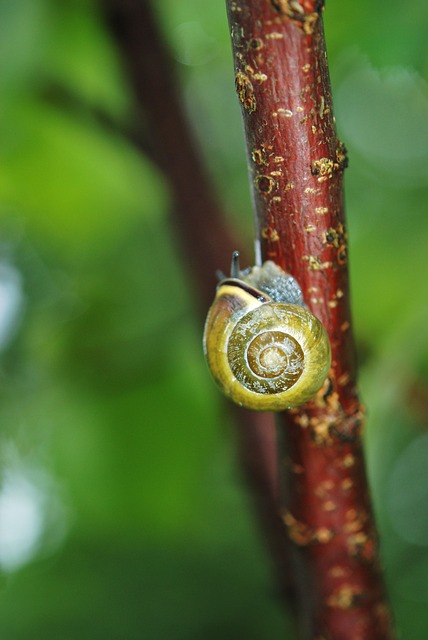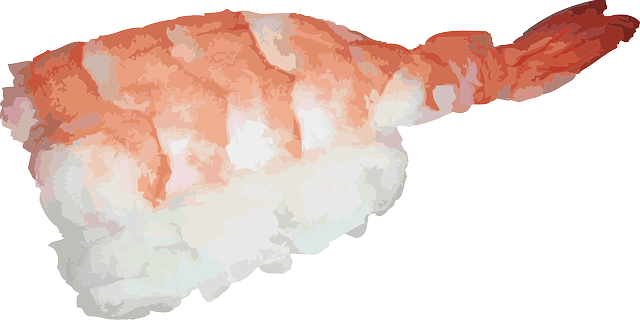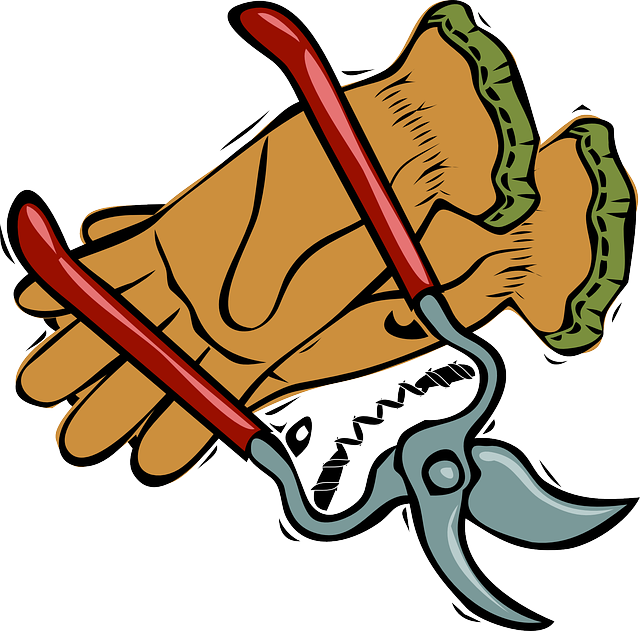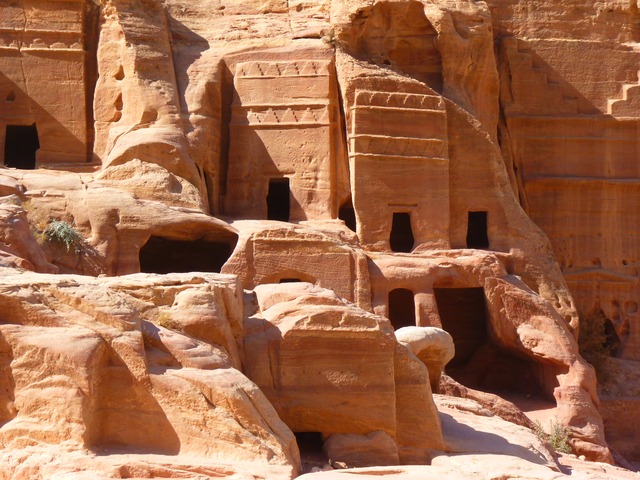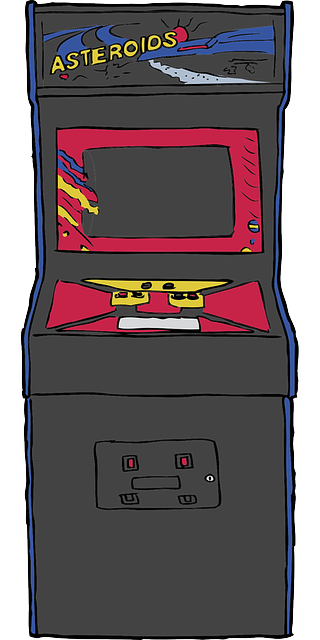أرخون أثينا
الأَرْخون لقب أبرز المسؤولين الإداريين الرئيسيين التسعة في أثينا القديمة. بعد عام 683 ق.م.، كان جميع أرخون يحتل المنصب لسنة واحدة. وفي أول الأمر، كان الأرخونات من الأرستقراطيين الأثرياء، وكانوا ينُتخبون للمنصب انتخاباً.
بعد عام 487 ق.م.، كان يتم اختيار الأرخونات بالقُرعة. وكان المسؤولون الآخرون هم الملك والپولمارخ (إحدى وظائف الإدارة في أثينا القديمة) وستة ثسموثيتا (وظائف في الإدارة أيضًا). هؤلاء الموظفون كانوا أحيانًا يسمون بالأرخونات أيضًا.
قائمة أرخونات أثينا
In the following list of Archons, years where the name of the archon is unknown are identified as such. Years listed as "anarchy" mean that there was literally "no archon". There are various conflicting reconstructions of lists; sources for this list are given at the end. Note that the term of an archon covered two of our years, beginning in the spring or summer and continuing into the next spring or summer. The polemarch or strategoi, basileus, and thesmothetai (the six assistants to the archons) are also listed, where known.
الفترة العتيقة
أرخونات مدى الحياة
The later Athenian tradition varies on the exact position of this line; they held archonship for life, sometimes referred to as "Perpetual Archon", and exercised the sacral powers of kingship, as did the archon basileus later. The historicity of any of this ancient list may be reasonably doubted. Aristotle indicates that Medon and Acastus may have ruled as king rather than Archon.
| Year | Archon | Other notable information |
|---|---|---|
| 1068–1048 ق.م. | Medon (Μέδων) | First ruler of Attica after the Greek Dark Ages. |
| 1048–1012 ق.م. | Acastus (Ἄκαστος) | Troy VIIb2 destroyed (c. 1120 BC). |
| 1012–993 ق.م. | أرخيپوس | |
| 993–952 ق.م. | ثرسيپوس | |
| 952–922 ق.م. | Phorbas (Φόρβας) | Troy VIIb3: deserted (c. 950 BC) |
| 922–892 ق.م. | Megacles (Μεγακλῆς) | |
| 892–864 ق.م. | Diognetus | |
| 864–845 ق.م. | Pherecles | Homer composes the Iliad and Odyssey. (c. 850 BC) |
| 845–825 ق.م. | Ariphron | |
| 824–797 ق.م. | Thespieus (Θεσπιεύς) | |
| 796–778 ق.م. | Agamestor | |
| 778–755 ق.م. | Aeschylus (Αἰσχύλος) | First Olympiad (776 BC) |
| 755–753 ق.م. | Alcmaeon (Ἀλκμαίων) |
Decennial archons
In 753 BC the perpetual archonship by the Eupatridae was limited toعشرة years (the "decennial archons"):
| Year | Archon | Other notable information |
|---|---|---|
| 753–743 ق.م. | Charops | In Rome, Romulus, the first ruler of the city, takes power. |
| 743–733 ق.م. | Aesimides | In Messenia, First Messenian War begins. |
| 733–723 ق.م. | Clidicus | Diaulos footrace introduced at the Olympics. (724 BC) |
| 723–713 ق.م. | Hippomenes | |
| 713–703 ق.م. | Leocrates | |
| 703–693 ق.م. | Apsander | Hesiod writes "Theogony" (c. 700 BC). |
| 693–683 ق.م. | Eryxias | Boxing added to the Olympics. (688 BC)Chalcedon colony founded (685 BC). |
الأرخونات السنوية
After 683 BC the archonship was limited to one year. Archons resided in the Prytaneum.
| Year | Eponymous archon | Other officials or associated events |
|---|---|---|
| 682–681 ق.م. | Creon | Creon is considered by the ancient sources, and most modern authorities, as the first annual archon. |
| 681–680 ق.م. | Lysiades | Mentioned in the Parian Marble. |
| 680–679 ق.م. | Tlesias | Pausanias (IV.15.1) dates the beginning of the Second Messenian War to his archonship. |
| 679–671 ق.م. | Unknown | |
| 671–670 ق.م. | Leostratus | |
| 670–669 ق.م. | Unknown | |
| 669–668 ق.م. | Pisistratus | Pausanias (II.24.7) dates the first Battle of Hysiae to his archonship. |
| 668–667 ق.م. | Autosthenes | Pausanias (IV.23.4) dates the capture of Eira and the end of the Second Messenian War to his archonship. |
| 667–664 ق.م. | Unknown | |
| 664–663 ق.م. | Miltiades | |
| 663–659 ق.م. | Unknown | |
| 659–658 ق.م. | Miltiades | |
| 658–645 ق.م. | Unknown | Pausanias (VIII.39.3) dates the capture of Phigalia by the Spartans to his archonship. |
| 645–644 ق.م. | Dropides | The Parian Marble associates Dropides with the floruit of Terpander the Lesbian, who developed the music of the lyre. |
| 644–639 ق.م. | Unknown | |
| 639–638 ق.م. | Damasias | Thales was born |
| 638–634 ق.م. | Unknown | |
| 634–633 ق.م. | Epaenetus (?) | |
| 633–632 ق.م. | Unknown | |
| 632–631 ق.م. | Megacles | Cylon attempts to become tyrant |
| 631–624 ق.م. | Unknown | |
| 624–623 ق.م. | Aristaechmus | According to the Athenian Constitution, Dracon reformed the laws of Athens during the archonship of Aristaechmus. |
| 623–621 ق.م. | Unknown |
Reorganized
| Year | Eponymous archon | Other officials or associated events |
|---|---|---|
| 621–615 ق.م. | Unknown | |
| 615–614 ق.م. | Heniochides | |
| 614–605 ق.م. | Unknown | |
| 605–604 ق.م. | Aristocles | The Parian Marble associates the archonship of Aristocles with Alyattes becoming king of Lydia. |
| 604–600 ق.م. | Unknown | |
| 600–599 ق.م. | Critias | The Parian Marble dates the flight of Sappho from Lesbos to Sicily in the archonship of Critias. |
| 599–597 ق.م. | Unknown | |
| 597–596 ق.م. | Cypselus | |
| 596–595 ق.م. | Telecles | |
| 595–594 ق.م. | Philombrotus | First Sacred War begins. |
| 594–593 ق.م. | Solon | Solon reforms Draco's code. |
| 593–592 ق.م. | Dropides | |
| 592–591 ق.م. | Eucrates | |
| 591–590 ق.م. | Simon | |
| 590–589 ق.م. | anarchy | |
| 589–588 ق.م. | Phormion | |
| 588–587 ق.م. | Philippus | |
| 587–586 ق.م. | Unknown | |
| 586–585 ق.م. | anarchy | |
| 585–582 ق.م. | Unknown | Pythian Games reorganised at Delphi. |
| 582–581 ق.م. | Damasias | According to the Athenian Constitution, Damasias held the archonship for two years and nine months before being expelled. |
| 581–580 ق.م. | Damasias | Demetrios of Phaleron states that it was during the archonship of Damasias that "Thales was first called wise". |
| 580–579 ق.م. | anarchy | Committee ofعشرة men serves jointly as archons |
| 579–578 ق.م. | anarchy | |
| 578–577 ق.م. | Unknown | |
| 577–576 ق.م. | Archestratidas | |
| 576–570 ق.م. | Unknown | |
| 570–569 ق.م. | Aristomenes | |
| 569–566 ق.م. | Unknown | |
| 566–565 ق.م. | Hippocleides | |
| 565–561 ق.م. | Unknown | |
| 561–560 ق.م. | Komeas | The Athenian Constitution dates the usurpation of Pisistratus as tyrant of Athens to the archonship of Komeas. |
| 560–559 ق.م. | Hegestratus | Phaenias of Eresus dates the death of Solon to the archonship of Hegestratus. |
| 559–556 ق.م. | Unknown | |
| 556–555 ق.م. | Hegesias | The Athenian Constitution dates the first expulsion of Peisistratos to the archonship of Hegesias. |
| 555–554 ق.م. | Euthidemus | |
| 554–548 ق.م. | Unknown | |
| 548–547 ق.م. | Erxicleides | Pausanias (X.5.13) dates the destruction by fire of the fourth temple of Delphi to his archonship. |
| 547–546 ق.م. | Thespius | Pisistratus becomes tyrant again |
| 546–545 ق.م. | Phormion | |
| 545–536 ق.م. | Unknown | |
| 536-535 ق.م. | [...]naios | The Parian Marble dates the first performance of Thespis to the tenure of this archon, whose name is damaged. |
| 535–533 ق.م. | Unknown | |
| 533–532 ق.م. | Thericles | |
| 532–528 ق.م. | Unknown | |
| 528–527 ق.م. | Philoneus | According to the Athenian Constitution, Philoneus was archon when Pisistratus died and his sons Hippias and Hipparchus succeeded him as tyrants |
| 527–526 ق.م. | Onetor | |
| 526–525 ق.م. | Hippias | |
| 525–524 ق.م. | Cleisthenes | Cleisthenes later made reforms, in 508 BC. |
| 524–523 ق.م. | Miltiades | Cadoux is uncertain whether this is Miltiades son of Kypselos, or Miltiades son of Cimon. |
| 523–522 ق.م. | Calliades | |
| 522–521 ق.م. | Pisistratus | Possibly the son of Hippias, archon of 526/5. |
| 521–518 ق.م. | Unknown | |
| 518–517 ق.م. | Hebron (?) | |
| 517–511 ق.م. | Unknown | |
| 511–510 ق.م. | Harpactides | The Parian Marble dates the assassination of Hipparchus and the expulsion of the Peistratids from Athens to Harpactides' archonship. |
| 510–509 ق.م. | Scamandrius | |
| 509–508 ق.م. | Lysagoras | |
| 508–507 ق.م. | Isagoras | Cleisthenes competes with Isagoras for archonship, but is expelled by Cleomenes I of Sparta |
| 507–506 ق.م. | Alcmeon | |
| 506–504 ق.م. | Unknown | |
| 504–503 ق.م. | Acestorides | |
| 503–501 ق.م. | Unknown | |
| 501–500 ق.م. | Hermocreon | |
| 500–499 ق.م. | Smyrus (?) | |
| 499–497 ق.م. | Unknown | |
| 497–496 ق.م. | Archias | |
| 496–495 ق.م. | Hipparchus | |
| 495–494 ق.م. | Philippus | |
| 494–493 ق.م. | Pythocritus | |
| 493–492 ق.م. | Themistocles | |
| 492–491 ق.م. | Diognetus | |
| 491–490 ق.م. | Hybrilides | |
| 490–489 ق.م. | Phaenippus | The Parian Marble, Plutarch, and the Athenian Constitution all date the Battle of Marathon to the archonship of Phaenippus. |
| 489–488 ق.م. | Aristides the Just | |
| 488–487 ق.م. | Anchises | |
| 487–486 ق.م. | Telesinus | The Athenian Constitution dates the ostracism of Megacles to the archonship of Telesinus. |
| 486–485 ق.م. | Unknown | |
| 485–484 ق.م. | Philocrates | |
| 484–483 ق.م. | Leostratus | |
| 483–482 ق.م. | Nicodemus | |
| 482–481 ق.م. | Unknown | |
| 481–480 ق.م. | Hypsichides | According to the Athenian Constitution, Hypsichides was archon when the ostracized of Athens were recalled. |
الفترة الكلاسيكية
| Year | Eponymous archon | Other officials or notable events |
|---|---|---|
| 480–479 ق.م. | Calliades | According to Diodorus Siculus, the Second Persian invasion of Greece began during Calliades' archonship. Aristides and Themistocles are strategoi. |
| 479–478 ق.م. | Xanthippus | Battle of Plataea; Aristides is strategos |
| 478–477 ق.م. | Timosthenes | Delian League founded. |
| 477–476 ق.م. | Adimantus | |
| 476–475 ق.م. | Phaedon | |
| 475–474 ق.م. | Dromoclides | |
| 474–473 ق.م. | Acestorides | |
| 473–472 ق.م. | Menon | |
| 472–471 ق.م. | Chares | |
| 471–470 ق.م. | Praxiergus | |
| 470–469 ق.م. | Demotion | |
| 469–468 ق.م. | Apsephion | |
| 468–467 ق.م. | Theagenides | |
| 467–466 ق.م. | Lysistratus | |
| 466–465 ق.م. | Lysanias | |
| 465–464 ق.م. | Lysitheus | Sophanes is a strategos |
| 464–463 ق.م. | Archedemides | |
| 463–462 ق.م. | Tlepolemus | Cimon is a strategos |
| 462–461 ق.م. | Conon | According to the Athenian Constitution (ch. 25), Ephialtes reforms the Areopagus, and is assassinated. |
| 461–460 ق.م. | Euthippus | Also spelled Euippos. |
| 460–459 ق.م. | Phrasicles | |
| 459–458 ق.م. | Philocles | Phrynicus, Dicaeogenes and Hippodamas are strategoi. |
| 458–457 ق.م. | Habron | So Diodorus Siculus (11.79); other authorities state the eponymous archon for this year was Bion. |
| 457–456 ق.م. | Mnesitheides | |
| 456–455 ق.م. | Callias | |
| 455–454 ق.م. | Sosistratus | |
| 454–453 ق.م. | Ariston | |
| 453–452 ق.م. | Lysicrates | |
| 452–451 ق.م. | Chaerephanes | |
| 451–450 ق.م. | Antidotus | Anaxicrates and Cimon are strategoi |
| 450–449 ق.م. | Euthydemus | |
| 449–448 ق.م. | Pedieus | Second Sacred War begins. |
| 448–447 ق.م. | Philiscus | Pericles, Tolmides and Epiteles are strategoi; Peace of Callias ends the Greco-Persian Wars |
| 447–446 ق.م. | Timarchides | Construction of the Parthenon begins. |
| 446–445 ق.م. | Callimachus | |
| 445–444 ق.م. | Lysimachides | Peace between Athens and Sparta. Age of Pericles begins. |
| 444–443 ق.م. | Praxiteles | Pericles is a strategos |
| 443–442 ق.م. | Lysanias | Pericles is a strategos |
| 442–441 ق.م. | Diphilus | Pericles is a strategos |
| 441–440 ق.م. | Timocles | Pericles and Glaucon are strategoi |
| 440–439 ق.م. | Morychides | Pericles is a strategos |
| 439–438 ق.م. | Glaucinus | Also spelled Glaucidus. Pericles is a strategos |
| 438–437 ق.م. | Theodorus | Pericles is a strategos |
| 437–436 ق.م. | Euthymenes | Pericles is a strategos. Construction of the Propylaea begins |
| 436–435 ق.م. | Lysimachus | So Diodorus Siculus (12.33); other authorities state the eponymous archon for this year was Nausimachos. Pericles is a strategos |
| 435–434 ق.م. | Antiochides | Also spelled Antilochidos. Pericles is a strategos |
| 434–433 ق.م. | Crates | Also spelled Chares. Pericles is a strategos |
| 433–432 ق.م. | Apseudes | Pericles, Lacedaemonius, Diotimus, and Proteas are strategoi |
| 432–431 ق.م. | Pythodorus | Thucydides dates the beginning of the Peloponnesian War to the tenure of this archon. Pericles and Callias are strategoi. |
| 431–430 ق.م. | Euthydemus | Also spelled Euthydemos. Pericles is a strategos. |
| 430–429 ق.م. | Apollodorus | Pericles dies; Xenophon, Hestiodorus, Calliades, Melesandrus, and Phanomachus are strategoi. |
| 429–428 ق.م. | Epameinon | Phormio is a strategos. |
| 428–427 ق.م. | Diotimus | Demosthenes, Asopius, Paches, Cleidippes, and Lysicles are strategoi |
| 427–426 ق.م. | Eucles | Also spelled Eucleides. Nicias, Charoiades and Procles are strategoi |
| 426–425 ق.م. | Euthynos | Also called Euthydemos. Laches and Hippocrates are strategoi |
| 425–424 ق.م. | Stratocles | Nicias, Eurymedon, Pythodorus, and Sophocles are strategoi |
| 424–423 ق.م. | Isarchus | Demosthenes, Cleon, Thucydides and Hippocrates are strategoi |
| 423–422 ق.م. | Amynias | Also spelled Ameinias. Cleon is a strategos |
| 422–421 ق.م. | Alcaeus | Cleon is a strategos |
| 421–420 ق.م. | Aristion | Construction of the Erechtheion begins. |
| 420–419 ق.م. | Astyphilus | Alcibiades is strategos |
| 419–418 ق.م. | Archias | |
| 418–417 ق.م. | Antiphon | Laches and Nicostratus are strategoi |
| 417–416 ق.م. | Euphemus | |
| 416–415 ق.م. | Arimnestus | Nicias, Alcibiades, and Lamachus are strategoi |
| 415–414 ق.م. | Charias | Also spelled Chabrias. Alcibiades is a strategos |
| 414–413 ق.م. | Tisandrus | Lamachus is a strategos |
| 413–412 ق.م. | Cleocritus | Eurymedon, Demosthenes, and Nicias are strategoi |
| 412–411 ق.م. | Callias Scambonides | |
| 411–410 ق.م. | Mnasilochus (died); Theopompus | Simichus and Aristarchus are strategoi |
| 410–409 ق.م. | Glaucippus | |
| 409–408 ق.م. | Diocles | Anytus is a strategos |
| 408–407 ق.م. | Euctemon | |
| 407–406 ق.م. | Antigenes | Alcibiades, Adeimantus, and Aristocrates are strategoi |
| 406–405 ق.م. | Callias Angelides | Archestratus, Thrasylus, Pericles, Lysias, Diomedon, Aristocrates, Erasinides, Protomachus, and Aristogenes are strategoi |
| 405–404 ق.م. | Alexias | Adeimantus, Eucrates, Philocles, Menandrus, Tydeus, and Cephisodotus are strategoi |
| 404–403 ق.م. | Pythodorus | Sparta sets up the oligarchy of the Thirty Tyrants; Pythodorus not recognized as Eponymous Archon |
| 403–402 ق.م. | Eucleides | Thirty Tyrants expelled, democracy reestablished. Old Attic alphabet was officially abolished in favor of the Ionic alphabet of twenty-four letters. |
| 402–401 ق.م. | Micon | Also spelled Micion. |
| 401–400 ق.م. | Xenaenetus | Also spelled Exaenetus. |
| 400–399 ق.م. | Laches | |
| 399–398 ق.م. | Aristocrates | |
| 398–397 ق.م. | Euthycles | Also spelled Ithycles. |
| 397–396 ق.م. | Souniades | |
| 396–395 ق.م. | Phormion | |
| 395–394 ق.م. | Diophantus | |
| 394–393 ق.م. | Eubulides | |
| 393–392 ق.م. | Demostratos | Adeimantus is a strategos |
| 392–391 ق.م. | Philocles | |
| 391–390 ق.م. | Nicoteles | |
| 390–389 ق.م. | Demostratus | Thrasybulus and Ergocles are strategoi |
| 389–388 ق.م. | Antipatrus | Agyrrhius and Pamphilus are strategoi |
| 388–387 ق.م. | Pyrgion | Thrasybulus and Dionysius are strategoi |
| 387–386 ق.م. | Theodotus | |
| 386–385 ق.م. | Mystichides | |
| 385–384 ق.م. | Dexitheus | |
| 384–383 ق.م. | Dieitrephes | Also spelled Diotrephes |
| 383–382 ق.م. | Phanostratus | |
| 382–381 ق.م. | Euandrus | |
| 381–380 ق.م. | Demophilus | |
| 380–379 ق.م. | Pytheas | |
| 379–378 ق.م. | Nicon | |
| 378–377 ق.م. | Nausinicus | |
| 377–376 ق.م. | Calleas | Also spelled Callias. |
| 376–375 ق.م. | Charisandrus | Cedon is a strategos. |
| 375–374 ق.م. | Hippodamas | |
| 374–373 ق.م. | Socratides | |
| 373–372 ق.م. | Asteius | Iphicrates, Callistratus, Chabrias, and Timotheus are strategoi |
| 372–371 ق.م. | Alcisthenes | |
| 371–370 ق.م. | Phrasicleides | |
| 370–369 ق.م. | Dysnicetus | (mistakenly Dyscinetus in Pausanias 4.27.9) |
| 369–368 ق.م. | Lysistratus | |
| 368–367 ق.م. | Nausigenes | |
| 367–366 ق.م. | Polyzelus | |
| 366–365 ق.م. | Ciphisodorus | Chabrias is a strategos |
| 365–364 ق.م. | Chion | Iphicrates is a strategos |
| 364–363 ق.م. | Timocrates | |
| 363–362 ق.م. | Charicleides | Ergophilus and Callisthenes are strategoi |
| 362–361 ق.م. | Molon | Leosthenes and Autocles are strategoi. |
| 361–360 ق.م. | Nicophemus | Timomachus is a strategos |
| 360–359 ق.م. | Callimides | Menon, Timotheus, and Cephisodotus are strategoi |
| 359–358 ق.م. | Eucharistus | |
| 358–357 ق.م. | Cephisodotus | |
| 357–356 ق.م. | Agathocles | Chabrias is a strategos. |
| 356–355 ق.م. | Elpines | Iphicrates, Timotheus, and Menestheus are strategoi. |
| 355–354 ق.م. | Callistratus | |
| 354–353 ق.م. | Diotemus | |
| 353–352 ق.م. | Thudemus | |
| 352–351 ق.م. | Aristodemus | |
| 351–350 ق.م. | Theellus | Theogenes is Basileus (possibly) |
| 350–349 ق.م. | Apollodorus | |
| 349–348 ق.م. | Callimachus | Hegesileus is a strategos |
| 348–347 ق.م. | Theophilus | |
| 347–346 ق.م. | Themistocles | Proxenus is a strategos |
| 346–345 ق.م. | Archias | |
| 345–344 ق.م. | Eubulus | |
| 344–343 ق.م. | Lyciscus | Phocion is a strategos. |
| 343–342 ق.م. | Pythodotus | |
| 342–341 ق.م. | Sosigenes | |
| 341–340 ق.م. | Nicomachus | |
| 340–339 ق.م. | Theophrastus | Phocion is a strategos |
| 339–338 ق.م. | Lysimachides | Phocion is a strategos, and is defeated by Philip II of Macedon |
| 338–337 ق.م. | Chaerondas | Lysicles is a strategos |
| 337–336 ق.م. | Phrynichus | |
| 336–335 ق.م. | Pythodelos | Also spelled Pythodoros. |
| 335–334 ق.م. | Euaenetus | |
| 334–333 ق.م. | Ctesicles | |
| 333–332 ق.م. | Nicocrates | |
| 332–331 ق.م. | Nicetes | Also spelled Niceratos |
| 331–330 ق.م. | Aristophanes | |
| 330–329 ق.م. | Aristophon | |
| 329–328 ق.م. | Cephisophon | |
| 328–327 ق.م. | Euthicritus | |
| 327–326 ق.م. | Hegemon | |
| 326–325 ق.م. | Chremes | |
| 325–324 ق.م. | Anticles | Philocles is a strategos |
| 324–323 ق.م. | Hegesias | Also spelled Agesias |
| 323–322 ق.م. | Cephisodorus | Also spelled Cephisophon. Phocion and Leosthenes are strategoi. Battle of Amorgos signals the end of Athenian sea power. |
| 322–321 ق.م. | Philocles | End of the Lamian War. Restriction of voting rights and installation of a Macedonian garrison in the Piraeus. |
الفترة الهلينية
| Year | Eponymous archon | Other officials or notable events |
|---|---|---|
| 321–320 ق.م. | أرخيپوس | |
| 320–319 ق.م. | Neaechmus | |
| 319–318 ق.م. | Apollodorus | |
| 318–317 ق.م. | Archippus | |
| 317–316 ق.م. | Demogenes | Demetrius Phalereus installed by the Macedonian regent Cassander as Governor. |
| 316–315 ق.م. | Democleides | |
| 315–314 ق.م. | Praxibulus | |
| 314–313 ق.م. | Nikodorus | |
| 313–312 ق.م. | Theophrastus | So Diodorus Siculus (19.73); other authorities state the eponymous archon for this year was Theodorus. |
| 312–311 ق.م. | Polemon | Seleucid Empire begins. |
| 311–310 ق.م. | Simonides | |
| 310–309 ق.م. | Hieromnemon | |
| 309–308 ق.م. | Demetrius | |
| 308–307 ق.م. | Caerimus | Also spelled Charinus. |
| 307–306 ق.م. | Anaxicrates | Demetrius Phalereus is expelled when Demetrius I Poliorcetes captures the city from Cassander. |
| 306–305 ق.م. | Coroebus | Antigonid dynasty begins. |
| 305–304 ق.م. | Euxenippus | |
| 304–303 ق.م. | Pherecles | |
| 303–302 ق.م. | Leostratus | |
| 302–301 ق.م. | Nicocles | |
| 301–300 ق.م. | Clearchus | |
| 300–299 ق.م. | Hegemachus | |
| 299–298 ق.م. | Euctemon | |
| 298–297 ق.م. | Mnesidemus | |
| 297–296 ق.م. | Antiphates | |
| 296–295 ق.م. | Nicias | |
| 295–294 ق.م. | Nicostratus | |
| 294–293 ق.م. | Olympiodorus | |
| 293–292 ق.م. | Olympiodorus | |
| 292–291 ق.م. | Philippus | |
| 291–290 ق.م. | Charinus (?) | |
| 290–289 ق.م. | Ambrosius (?) | |
| 289–288 ق.م. | Ariston (?) | |
| 288–287 ق.م. | Cimon | |
| 287–286 ق.م. | Xenophon | |
| 286–285 ق.م. | Diocles | |
| 285–284 ق.م. | Diotimus | |
| 284–283 ق.م. | Isaeus | |
| 283–282 ق.م. | Euthius | |
| 282–281 ق.م. | Nicias | Attalid dynasty begins. |
| 281–280 ق.م. | Ourias | |
| 280–279 ق.م. | Telecles | |
| 279–278 ق.م. | Anaxicrates | |
| 278–277 ق.م. | Democles | |
| 277–276 ق.م. | Aristonymus | |
| 276–275 ق.م. | Philocrates | |
| 275–274 ق.م. | Olbius | |
| 274–273 ق.م. | Eubulus | |
| 273–272 ق.م. | Glaucippus | |
| 272–271 ق.م. | Lysitheides | |
| 271–270 ق.م. | Pytharatus | |
| 270–269 ق.م. | Sosistratus | |
| 269–268 ق.م. | Peithidemus | Beginning of the Chremonidean War; Athens declares war on Macedon, ruled by Antigonus Gonatas. |
| 268–267 ق.م. | Diogeiton | |
| 267–266 ق.م. | Menecles | |
| 266–265 ق.م. | Nicias (Otryneus) | |
| 265–264 ق.م. | Eubulus | |
| 264–263 ق.م. | Diognetus | Diognetus is the latest archon mentioned in the Parian Chronicle, therefore that inscription was made during his tenure. |
| 263–262 ق.م. | Antipatrus | Athens surrenders to Antigonus Gonatas in the archonship of Antipatros. |
| 262–261 ق.م. | Arrheneides | Antigonus Gonatas imposes a new regime on Athens. |
| 261–260 ق.م. | [...]sinus | |
| 260–259 ق.م. | Philostratus | |
| 259–258 ق.م. | Philinus | |
| 258–257 ق.م. | Antiphon | |
| 257–256 ق.م. | Thymochares | |
| 256–255 ق.م. | Antimachus | |
| 255–254 ق.م. | Cleomachus | |
| 254–253 ق.م. | Phanostratus | |
| 253–252 ق.م. | Pheidostratus | |
| 252–251 ق.م. | Callimedes | |
| 251–250 ق.م. | Thersilochus | |
| 250–249 ق.م. | Polyeuctus | |
| 249–248 ق.م. | Hieron | |
| 248–247 ق.م. | Diomedon | |
| 247–246 ق.م. | Theophemus | |
| 246–245 ق.م. | Philoneos | |
| 245–244 ق.م. | Cydenor | |
| 244–243 ق.م. | Lysiades | |
| 243–242 ق.م. | Eurycleides | |
| 242–241 ق.م. | Phanomachus | |
| 241–240 ق.م. | Lyceus | |
| 240–239 ق.م. | Polystratus | |
| 239–238 ق.م. | Athenodorus | |
| 238–237 ق.م. | Lysias | |
| 237–236 ق.م. | Alkibiades | |
| 236–235 ق.م. | Cimon | |
| 235–234 ق.م. | Ecphantus | |
| 234–233 ق.م. | Lysanias | |
| 233–232 ق.م. | Unknown | |
| 232–231 ق.م. | Mneseides (?) | |
| 231–230 ق.م. | Jason (?) | |
| 230–228 ق.م. | Unknown | |
| 228–227 ق.م. | Heliodorus | |
| 227–226 ق.م. | Leochares | |
| 226–225 ق.م. | Theophilus | |
| 225–224 ق.م. | Ergochares | |
| 224–223 ق.م. | Nicetes | |
| 223–222 ق.م. | Antiphilus | |
| 222–221 ق.م. | Euxenus | |
| 221–220 ق.م. | Unknown | |
| 220–219 ق.م. | Thrasyphon | |
| 219–218 ق.م. | Menecrates | |
| 218–217 ق.م. | Chaerephon | |
| 217–216 ق.م. | Callimachus | |
| 216–215 ق.م. | Unknown | |
| 215–214 ق.م. | Hagnias | |
| 214–213 ق.م. | Diocles | First Macedonian War begins. (214 BC) |
| 213–212 ق.م. | Euphiletus | |
| 212–211 ق.م. | Heracleitus | |
| 211–210 ق.م. | Archelaus | |
| 210–209 ق.م. | Aeschron | |
| 209–208 ق.م. | Unknown | |
| 208–207 ق.م. | Unknown | |
| 207–206 ق.م. | Callistratus | |
| 206–205 ق.م. | Pantiades | |
| 205–204 ق.م. | Diodotus | |
| 204–203 ق.م. | Apollodorus | |
| 203–202 ق.م. | Proxenides | |
| 202–201 ق.م. | Dionysius | |
| 201–200 ق.م. | Isocrates | |
| 200–199 ق.م. | Nicophon | |
| 199–198 ق.م. | [...]ppus | |
| 198–197 ق.م. | Unknown | |
| 197–196 ق.م. | Ancylus | |
| 196–195 ق.م. | Pleistaenus | |
| 195–194 ق.م. | Unknown | |
| 194-193 ق.م. | Dionysius | |
| 193–192 ق.م. | Phanarchides | |
| 192–191 ق.م. | Diodotus | |
| 191–190 ق.م. | Timouchus | |
| 190–189 ق.م. | Demetrius | |
| 189–188 ق.م. | Euthycritus | |
| 188–187 ق.م. | Symmachus | |
| 187–186 ق.م. | Theoxenus | |
| 186–185 ق.م. | Zopyrus | |
| 185–184 ق.م. | Eupolemus | |
| 184–183 ق.م. | Charicles | |
| 183–182 ق.م. | Hermogenes | |
| 182–181 ق.م. | Timesianax | |
| 181–180 ق.م. | Hippias | |
| 180–179 ق.م. | Dionysius | |
| 179–178 ق.م. | Menedemus | |
| 178–177 ق.م. | Philon | |
| 177–176 ق.م. | [...]ppus | |
| 176–175 ق.م. | Hippacus | |
| 175–174 ق.م. | Sonicus | |
| 174–173 ق.م. | Alexander | |
| 173–172 ق.م. | Alexis | |
| 172–171 ق.م. | Sosigenes | |
| 171–170 ق.م. | Antigenes | |
| 170–169 ق.م. | Aphrodisius | |
| 169–168 ق.م. | Eunicus | |
| 168–167 ق.م. | Xenocles | |
| 167–166 ق.م. | Nicosthenes | |
| 166–165 ق.م. | Achaeus (?) | |
| 165–164 ق.م. | Pelops | |
| 164–163 ق.م. | Euergetes | |
| 163–162 ق.م. | Erastus | |
| 162–161 ق.م. | Poseidonius | |
| 161–160 ق.م. | Aristolas | |
| 160–159 ق.م. | Tychandrus | |
| 159–158 ق.م. | Aristaemus | |
| 158–157 ق.م. | Aristaechmus | |
| 157–156 ق.م. | Anthesterius | |
| 156–155 ق.م. | Callistratus | |
| 155–154 ق.م. | Mnestheus | |
| 154–153 ق.م. | Unknown | |
| 153–152 ق.م. | Phaidrias | |
| 152–151 ق.م. | Andreas (?) | |
| 151–150 ق.م. | Zeleucus (?) | |
| 150–149 ق.م. | Speusippos (?) | Fourth Macedonian War begins (150 BC). |
| 149–148 ق.م. | Lysiades (?) | |
| 148–147 ق.م. | Archon | |
| 147–146 ق.م. | Epicrates | Rome takes control of Greece |
الفترة الرومانية
| Year | Eponymous archon | Other officials or notable events |
|---|---|---|
| 146–145 ق.م. | Aristophantus (?) | |
| 145–144 ق.م. | Metrophanes (?) | |
| 144–143 ق.م. | Theaetetus | |
| 143–142 ق.م. | Aristophon | |
| 142–141 ق.م. | Micion (?) | |
| 141–140 ق.م. | [Dionysius] | |
| 140–139 ق.م. | Hagnotheus | |
| 139–138 ق.م. | Diocles | |
| 138–137 ق.م. | Timarchus | |
| 137–136 ق.م. | Heracleitus | |
| 136–135 ق.م. | Timarchides | |
| 135–134 ق.م. | Dionysius | |
| 134–133 ق.م. | Nicomachus | |
| 133–132 ق.م. | Xenon | |
| 132–131 ق.م. | Ergocles | |
| 131–130 ق.م. | Epicles | |
| 130–129 ق.م. | Demostratus | |
| 129–128 ق.م. | Lyciscus | |
| 128–127 ق.م. | Dionysius | |
| 127–126 ق.م. | Theodorides | |
| 126–125 ق.م. | Diotimus | |
| 125–124 ق.م. | Jason | |
| 124–123 ق.م. | Nicias (died); Isigenes | |
| 123–122 ق.م. | Demetrius | |
| 122–121 ق.م. | Nicodemus | |
| 121–120 ق.م. | Phocion (?) | |
| 120–119 ق.م. | Eumachus | |
| 119–118 ق.م. | Hipparchus | |
| 118–117 ق.م. | Lenaeus | |
| 117–116 ق.م. | Menoetes | |
| 116–115 ق.م. | Sarapion | |
| 115–114 ق.م. | Nausias | |
| 114–113 ق.م. | [...]raton | |
| 113–112 ق.م. | Paramonus | |
| 112–111 ق.م. | Dionysius | |
| 111–110 ق.م. | Sosicrates | |
| 110–109 ق.م. | Polycleitus | |
| 109–108 ق.م. | Jason | |
| 108–107 ق.م. | Demochares | |
| 107–106 ق.م. | Aristarchus | |
| 106–105 ق.م. | Agathocles | |
| 105–104 ق.م. | Andronides (?) | |
| 104–103 ق.م. | Heracleides | |
| 103–102 ق.م. | Theocles | |
| 102–101 ق.م. | Echecrates | |
| 101–100 ق.م. | Medeius | |
| 100–99 ق.م. | Theodosius | |
| 99–98 ق.م. | Procles | |
| 98–97 ق.م. | Argeius | |
| 97–96 ق.م. | Heracleitus | |
| 96–95 ق.م. | [...]craton | |
| 95–94 ق.م. | Theodotus | |
| 94–93 ق.م. | Callias | |
| 93–92 ق.م. | Criton | |
| 92–91 ق.م. | Menedemus | |
| 91–90 ق.م. | Medeius | |
| 90–89 ق.م. | Medeius | |
| 89–88 ق.م. | Medeius | |
| 88–87 ق.م. | anarchy | Athens captured by Lucius Cornelius Sulla, who reorganizes its government |
| 87–86 ق.م. | Philanthes | |
| 86–85 ق.م. | Hierophantes | |
| 85–84 ق.م. | Pythocritus | |
| 84–83 ق.م. | Nicetas | |
| 83–82 ق.م. | Pammenes | |
| 82–81 ق.م. | Demetrius | |
| 81–80 ق.م. | Ar[...] | |
| 80–79 ق.م. | Apollodorus | |
| 79-78 ق.م. | Unknown | |
| 78–77 ق.م. | Aeschraeus | |
| 77-76 ق.م. | Seleucus | |
| 76–75 ق.م. | Heracleodoros | |
| 75–74 ق.م. | Aeschines | |
| 74–73 ق.م. | Unknown | |
| 73–72 ق.م. | Nicetes (?) | |
| 72–71 ق.م. | Unknown | |
| 71–70 ق.م. | Aristoxenus (?) | |
| 70–69 ق.م. | Criton (?) | |
| 69–67 ق.م. | Unknown | |
| 67–66 ق.م. | Theoxenus (?) | |
| 66–65 ق.م. | Medeius (?) | |
| 65–64 ق.م. | Unknown | |
| 64-63 ق.م. | Oenophilus | |
| 63-62 ق.م. | [...]ius | |
| 62–61 ق.م. | Aristeius | |
| 61–60 ق.م. | Theophemus | |
| 60–59 ق.م. | Herodes | |
| 59–58 ق.م. | Leucius | |
| 58–57 ق.م. | Calliphon | |
| 57–56 ق.م. | Diocles | |
| 56–55 ق.م. | Coentus | |
| 55–54 ق.م. | Aristoxenus | |
| 54–53 ق.م. | Zenon | |
| 53–52 ق.م. | Diodorus | |
| 52–51 ق.م. | Lysander | |
| 51–50 ق.م. | Lysiades | |
| 50–49 ق.م. | Demetrius | |
| 49–48 ق.م. | Demochares | |
| 48–47 ق.م. | Philocrates | |
| 47–46 ق.م. | Diocles | |
| 46–45 ق.م. | Eucles | |
| 45–44 ق.م. | Diocles | |
| 44–43 ق.م. | Leucius of Rhamnous | |
| 43-42 ق.م. | Polycharmus | |
| 42–41 ق.م. | Euthydomus | |
| 41–40 ق.م. | Nicander | |
| 40–39 ق.م. | Philostratus | |
| 39–38 ق.م. | Diocles of Melite | |
| 38–37 ق.م. | Menander of Steiria | |
| 37–36 ق.م. | Callicratides (?) | |
| 36–35 ق.م. | Asclepiodorus | |
| 35–34 ق.م. | Theopeithes | |
| 34–33 ق.م. | Apollogenes (?) | |
| 33–32 ق.م. | Cleidamus | |
| 32-31 ق.م. | Unknown | |
| 31–30 ق.م. | Unknown | |
| 30–29 ق.م. | Architemus | |
| 29–26 ق.م. | Unknown | |
| 26–25 ق.م. | Dioteimus | |
| 25–22 ق.م. | Unknown | |
| 22–21 ق.م. | Apolexis | |
| 20–19 ق.م. | Demeas | |
| 19–17 ق.م. | Unknown | |
| 17-16 ق.م. | Ae[...] | |
| 16–15 ق.م. | Pythagoras | |
| 15–14 ق.م. | Antiochus | |
| 14–13 ق.م. | Polyaenus | |
| 13–12 ق.م. | Zenon | |
| 12–11 ق.م. | Leonidas | |
| 11–10 ق.م. | Theophilus | |
| 10–9 ق.م. | Nicias | |
| 9–8 ق.م. | Xenon | |
| 8–7 ق.م. | Apolexis of Oesia | |
| 7–6 ق.م. | Unknown | |
| 6–5 ق.م. | Nicostratus | |
| 5–4 ق.م. | Cotys | |
| 4–3 ق.م. | Anaxagoras | |
| 3–2 ق.م. | Demochares | |
| 2–1 ق.م. | Polycharmus | |
| 1 BC–AD 1 | Lacon | |
| 1–2 | Democrates | |
| 2–3 | [...] Sounieus | |
| 3–4 | [...] Sphettius | |
| 4–5 | [...]on | |
| 5–23 | Unknown | |
| 23–24 | M[...] | |
| 24–25 | Charm[...] | |
| 25–26 | Callicr[...] | |
| 26–27 | Pamphilus | Julio-Claudian dynasty begins. |
| 27–28 | Themistocles | |
| 28–29 | Oenophilus | |
| 29–30 | Boethus | |
| 30–31 | [...]trus | |
| 31-36 | Unknown | |
| 36–37 | Basileus Rhoemetalkes Ne(oteros) | Later king of Odrysia |
| 37–38 | Arist[...] (?) | |
| 38-39 | Polycritus (?) | |
| 39-40 | Zen[on] (?) | |
| 40-41 | [...]ouius Leo[...] | |
| 41-45 | Unknown | |
| 45–46 | Antipater | |
| 46–49 | Unknown | |
| 49–50 | Deinophilus | |
| 50–54 | Unknown | |
| 53–54 | Dionysodorus | |
| 54–56 | Unknown | |
| 56–57 | Konon | |
| 57–61 | Unknown | |
| 61–62 | Thrasyllus | |
| 62–65 | Unknown | |
| 64–65 | C. Carrinus Secundus, son of Gaius | |
| 65–66 | Demostratus | |
| 66-74 | Unknown | |
| 74-75 | Epiphanes Philopappus (?) | Grandson of the last king of Commagene |
| 75–79 | Unknown | |
| c. 80 | Loucius | |
| 81-83 | Unknown | |
| 83-84 | Anarchy | |
| 84-85 | Unknown | |
| 85-86 | Titus Flavius Domitianus | Also Roman Emperor |
| 86-87 | Q. Trebellius Rufus | Also high priest of the imperial cult for Narbonese Gaul. |
| 87-88 | anarchy | |
| 88-89 | Ti. Claudius Hierophantes Callicratidius | |
| 89-90 | Aeolion | |
| 90-91 | L. Flavius Phlammas | |
| 91-92 | T. Flavius Leosthenes | |
| 92–93 | [...] Oethen | |
| 93–94 | [...]oteionus | |
| 94-95 | Dionysodorus | |
| 95-96 | Philopappus and Laelianon | |
| 96–112 | Unknown | |
| 112–113 | Publius Aelius Traianus Hadrianus | Later Roman Emperor |
| 113–114 | Octavius Theon | |
| 114–115 | Octavius Proclus | |
| 115–116 | Pantaenus | |
| 116–117 | Flavius Macrinus | |
| 117–118 | T. Coponius Maximus | So Oliver; Samuels sees two names in the primary source. |
| 118–119 | Lucius Vibullius Hipparchus | |
| 119–120 | Flavius Stratolaus | |
| 120-121 | Kl. Demophilus | |
| 121-122 | Flavius Sophocles | |
| 122-123 | T. Flavius Alcibiades | Son of T. Flavius Leosthenes, archon in 91/2 |
| 123-124 | Casius Diogenes | |
| 124-125 | Flavius Euphanes | |
| 125-126 | G. Julius Casius | |
| 126–127 | Claudius Herodes Marathonius | Brother-in-law of Vibullius Hipparchus, archon in 118/9 |
| 127–128 | Memmius [...]ros | |
| 128–131 | Unknown | |
| 131–132 | Claudius Philogenes | |
| 132–138 | Unknown | |
| 138–139 | Praxagoras | |
| 139–140 | Flavius Alcibiades | Son of T. Flavius Alcibiades, archon in 122/3 |
| 140–141 | Tiberius Claudius Attalus | |
| 141–142 | Publius Aelius Phileas | |
| 142–143 | Publius Aelius Alexander | |
| 143–144 | Publius Aelius Vibullius Rufus | Nephew of Herodes Atticus, archon in 126/7 |
| 144–145 | Unknown | |
| 145–146 | Flavius Arrianus Paeanieus | |
| 146–147 | Tiberius [...] | |
| 147–148 | Syllas | |
| 148–149 | Unknown | |
| 150–151 | Aelius Ardys | |
| 151–154 | Unknown | |
| 154–155 | Praxagoras | |
| 155–156 | Popillius Theotimus | |
| 156–157 | Aelius Callicrates | |
| 157–158 | Unknown | |
| 158–159 | Tiberius Aurelius Philemon Philades | |
| 159–160 | Aelius Alexander | |
| 160–161 | Publius Aelius Hellen [who is also called] Pl[...] | |
| 161–162 | Memmius epi bomo | |
| 162–163 | Aelius Gelus | |
| 163–164 | Philisteides | |
| 164–165 | Unknown | |
| 165–166 | Sextus | |
| 166–167 | Marcus Valerius Mamertinus Marathonius | |
| 167–168 | anarchy | Rotoff suggests that the absence of an archon for this year, and two of the following four years, was likely due to the Antonine Plague. |
| 168–169 | Tineius Ponticus Besaieus | |
| 169–170 | anarchy | |
| 170–171 | Tiberius Memmius Flaccus Marathonius | |
| 171–172 | anarchy | |
| 172–173 | Lucius Gellius Xenagoras | |
| 173–174 | Biesius Peison | |
| 174–175 | Flavius Harpalianus | |
| 175–176 | Arrianus Epaphroditus | |
| 176–177 | Claudius Heracleides | |
| 177–178 | Aeschines (?) | |
| 178–179 | Hegias (?) | |
| 179–180 | Athenodorus Agrippas Iteaeus (?) | |
| 180–181 | Claudius Demostratus | |
| 181–182 | Unknown | |
| 182–183 | Marcus Munatius Maximianus Vopiscus | |
| 183–184 | Domitius Aristaeus Paeonides | |
| 184–185 | Titus Flavius Sosigenes Palleneus | |
| 185–186 | Philoteimus son of Arcesidemus, of Eleusis | |
| 186–187 | Gaius Fabius Thisbianus Marathonius | |
| 187–188 | Atilius Bradua Regillus Atticus | Son of Herodes Atticus, archon 126/7 |
| 188–189 | Lucius Aelius Aurelius Commodus Antoninus | Also Roman Emperor |
| 189–190 | Menogenes | |
| 190–191 | Gaius Peinarius Proclus Agnousius | |
| 191–192 | Unknown | |
| 192–193 | Gaius Helvidius Secundus | |
| 193–194 | Claudius Dadouchos | |
| 194-195 | Aurelius Philisteides | |
| 195-196 | Quint[...] | |
| 196-197 | Flavius Straton | |
| 197-198 | Xenokles (?) | |
| 198–199 | Titus Flavius Sosigenes Palleneus (?) | |
| 199-200 | Dionysodorus Eucarpon (?) | |
| 200-201 | Flavius Eiachchagogus Agryleus (?) | |
| 201-202 | Agathokles (?) | |
| 202–203 | [...]mos | |
| 203–204 | Aurelius Dem[...] (?) | |
| 204-205 | Domitius Aristaeus Paeonides (?) | |
| 205-206 | Gaius Quintus Imertus Marathonius | |
| 206-207 | anarchy | |
| 207-208 | Gaius Castius Apollonius Streircus | |
| 208-209 | Fabius Dadouchus Marathonius | |
| 209–210 | Flavius Diogenes Marathonius | |
| 210-211 | Pompeius Alexander (?) | |
| 211–212 | Claudius Phokas Marathonius (?) | |
| 212–213 | Aurelius Dionysius Acharneus | |
| 213–220 | Unknown | |
| 220–221 | Philinus | |
| 221–222 | Domitius Arabianus Marathonius | |
| 222-223 | Gaius Quintus Cleon Marathonius | |
| 223-224 | Hiereus An[...] | |
| 224-225 | Tiberius Claudius Patroclus | |
| 225-226 | Le. Dionysodorus | |
| 226-227 | Munatius Themison | |
| 227–228 | G. Pinarios Bassus | |
| 228-229 | [Maratho]nius Ne(oterus) | |
| 229–230 | Marcus Ulpius Eubiotus Leurus | Also suffect consul, c. 230 |
| 230-231 | Marcus Aurelius Calliphron, also called Frontinus | |
| 231–232 | Casianus | |
| 232–233 | Unknown | |
| 233–234 | Claudius Teres | |
| 234–235 | Epictetus | |
| 235–238 | Unknown | |
| 238-239 | Casianus Hieroceryx | |
| 239-240 | Flavius Asclepiades | |
| 240–241 | Cassianus Philippus Steirieus | |
| 241–244 | Unknown | |
| 244-245 | Aurelius Laudicianus | |
| 245-249 | Unknown | |
| 249–250 | Publius Herennius Dexippus | Also archon Basileus? |
| 251–252 | Cornelianus | |
| 252–262 | Unknown | |
| 262–263 | Lucius Flavius Philostratus | |
| 263-264 | Unknown | |
| 264–265 | Publius Licinius Egnatius Gallienus | Also Roman Emperor |
| c. 275 | Titus Flavius Mondon | |
| between 300 and 330 |
Constantine the Great | |
| between 300 and 350 |
Hegeias | |
| end 4th century |
Phaedrus | |
| 386-387 | Hermogenes | |
| between 425 and 450 |
Theagenes | |
| 484-485 | Nicagoras |
انظر أيضًا
- أريوپاگوس
- أرخون باسيليوس Archon basileus
- Polemarch (استبدل في 501 ق.م. بعشرة strategoi)
- Hierotheos the Thesmothete، ينطق أنه أول زعيم لمسيحيي أثينا.
المصادر والهامش
- [ الموسوعة المعهدية الكاملة]
- ^ Aristotle Constitution of Athens, 3
- ^ The son of Codrus was lame, which was why his brother Neileus would not let him rule, but the Delphian oracle bestowed the kingdom upon Medon. For more see Pausanias, Description of Greece, 7. 2. 1.
- ^ Constitution of Athens and Related Texts – Page 70
- ^ John Blair, Blair's Chronological and Historical Tables: From the Creation to the Present Time, with Additions and Corrections from the Most Authentic Writers, Including the Computation of St. Paul, as Connecting the Period from the Exode to the Temple. London: Longman, Brown, Green and Longmans, 1844. pg. 27
- ^ John Lemprière, A Classical Dictionary pg. 183
- ^ Pausanias, Description of Greece, Volume ثلاثة – Page 64. (cf. "The successors of Codrus were Medon (son of Codrus), Acastus (son of Medon), Archippus (son of Acastus), Thersippus (son of Archippus), Phorbas (son of Thersippus), Megacles (son of Phorbas), Diognetus (son of Megacles), Pherecles (son of Diognetus), Ariphron (son of Pherecles), Thespieus (son of Ariphron), Agamestor (son of Thespieus), Aeschylus (son of Agamestor), Alcmaeon. All these, according to the common tradition, held the archonship for life. After Alcmaeon the tenure of the office was made decennial. The first decennial archon was Charops, the second was Aesimides, and the third was Clidicus. See Eusebius, Chronic. vol. 1. pp. 185–190, ed. Schone.")
- ^ Michael Russell, A Connection of Sacred and Profane History, Pg 355
- ^ See Historicity of the Iliad.
- ^ Herodotus 2.53.
- ^ George Crabb, Universal Historical Dictionary pg. 91
- ^ According to Diodorus Siculus (of the 1st century BC).
- ^ Blair, Chronological and Historical Tables pg. 30
- ^ Herodotus, George Rawlinson, Sir Henry Creswicke Rawlinson, Sir John Gardner Wilkinson. The History of Herodotus: A New English Version, Ed. with Copious Notes and Appendices, Illustrating the History and Geography of Herodotus, from the Most Recent Sources of Information; and Embodying the Chief Results, Historical and Ethnographical, which Have Been Obtained in the Progress of Cuneiform and Hieroglyphical Discovery, Volume 3. Appleton, 1882. Pg 316
- ^ Evelyn Abbott. A Skeleton Outline of Greek History: Chronologically Arranged. Pg 27.
- ^ The Roman Antiquities, Volume 1. By Dionysius (Halicarnassensis). pg 162.
- ^ History of Ancient and Modern Greece. By John Frost. Pg 35
- ^ According to Dionysius of Halicarnassus
- ^ Pausanias's Description of Greece, 4.5.3; Volume 3 By Pausanias. Pg 64
- ^ Henry-Fines Clinton. Fasti Hellenici, the Civil and Literary Chronology of Greece, from the Earliest Accounts to the Death of Augustus. University Press, 1834 pg 241, Pg 166
- ^ Nicolas Lenglet Dufresnoy. Chronological Tables of Universal History: Sacred and Profane, Ecclesiastical and Civil; from the Creation of the World, to the Year One Thousand Seven Hundred and Forty-three. With a Preliminary Discourse on the Short Method of Studying History; and a Catalogue of Books Necessary for that Purpose; with Some Remarks on Them, Volume 1. A. Millar, 1762. Pg 124
- ^ John Blair. Blair's Chronological and Historical Tables: From the Creation to the Present Time, with Additions and Corrections from the Most Authentic Writers, Including the Computation of St. Paul, as Connecting the Period from the Exode to the Temple. Longman, Brown, Green and Longmans, Paternoster Row., 1844. Pg 38
- ^ Blair's Chronological and Historical Tables. Pg 39
- ^ Unless otherwise indicated, the names and dates of archons down to 481/0 BC are taken from T. J. Cadoux, "The Athenian Archons from Kreon to Hypsichides", Journal of Hellenic Studies, 68 (1948), pp. 70-123
- ^ Cadoux, "Athenian Archons", p. 88
- ^ Cadoux notes "We cannot be sure that it was the same man who held the second archonship, nor, if we held that it was, do we know anything of the circumstances under which this happened. Nor, again, do we know if this man or men belonged to the Philaid family." ("Athenian Archons", p. 90)
- ^ Cadoux notes this entry is based on a surviving passage of Hippys of Rhegion which is very obscure; Hippys states one Epainetos was king at Athens in the 36th Olympiad. However, this statement is full of mistakes which makes Cadooux suspicious of this passage. ("Athenian Archons", p. 91)
- ^ Per one surviving fragment of the Athenian Archon list. Donald W. Bradeen, "The Fifth-Century Archon List", Hesperia, 32 (1963), pp. 187-208
- ^ Cadoux, "Athenian Archons", p. 103
- ^ So Cadoux and Alan Samuel; Benjamin D. Merrit notes the name could be read "Onetorides". (Merrit, "Greek inscriptions, 14-27", Hesperia, 8 (1939), p 60)
- ^ This identification has been questioned by Matthew P. J. Dillon, "Was Kleisthenes of Pleisthenes Archon at Athens in 525 BC?", Zeitschrift für Papyrologie und Epigraphik, 155 (2006), pp. 91-107
- ^ Herodotus, Histories, books V and VI Google Books link
- ^ But he adds, "It seems gratuitous to invent a third Miltiades-presumably from another family; and there are no solid chronological grounds for rejecting either of the two Philaids." (Cadoux, "Athenian Archons", p. 110)
- ^ See Cadoux, "Athenian Archons", pp. 111f
- ^ Alan Samuel is doubtful this archon existed, claiming this is based on Eustathius' misunderstanding his source, which provides the date Pindar died, not when he was born. Samuel, Greek and Roman Chronology (Muenchen: Beck'sche, 1972), p. 204
- ^ Cadoux suspects this is a corruption of the archon's real name. ("Athenian Archons", p. 116)
- ^ Added from Samuel, Greek and Roman Chronology, p. 205
- ^ Nine archons were appointed by lot by the tribes from 500 nominees chosen by the demes and that this was the method in the Archonship of Telesinus. See also the Areopagite constitution.
- ^ Cadoux, "Athenian Archons", p. 119
- ^ Unless otherwise noted, archons from 480/79 to 348/7 BC are taken from Alan E. Samuel, Greek and Roman Chronology (Muenchen: Beck'sche, 1972), pp. 206-210.
- ^ "Calliades was archon in Athens, and the Romans made Spurius Cassius and Proculus Verginius Tricostus consuls, and the Eleians celebrated the Seventy-fifth Olympiad, that in which Astylus of Syracuse won the 'stadion.' It was in this year that king Xerxes made his campaign against Greece" (Diodorus, 11.1.2)
- ^ Alternative spellings are taken from Samuel, Greek and Roman Chronology, pp. 206-210
- ^ Samuel, Greek and Roman Chronology, p. 207
- ^ Classical Philology. p. 53
- ^ The Works of Xenophon: & II and Anabasis. 1890 By Xenophon. Pg 98
- ^ Thucydides (2.2) states that it began "in the 48th year of the priestess-ship of Chrysis at Argos, in the ephorate of Aenesias at Sparta, in the last month but two of the archonship of Pythodorus at Athens." Thucydides reports a solar eclipse that summer (2.28), which can be confidently dated to ثلاثة August 431 BC. (E. J. Bickerman, Chronology of the Ancient World (Ithaca: Cornell University Press, 1968), p. 87)
- ^ Thucydides: Arguments. Peloponnesian War, Book III (cont'd.)-VI By Thucydides. Pg 208
- ^ Sophocles: The Oedipus Coloneus. 3d ed. 1900 By Sophocles, Sir Richard Claverhouse Jebb. Pg 4. (cf. Micon was [the Archon of] 402 B.C., Callias of [the Archon of] 406 B.C. Between them came Alexias (405), Pythodorus (404, the Anarchy), and Eucleides (403).)
- ^ Unless otherwise noted, archons from 347/6 to 301/0 BC are taken from Benjamin D. Meritt, "Athenian Archons 347/6–48/7 B.C.", Historia: Zeitschrift für Alte Geschichte, 26 (1977), pp. 161–191
- ^ Samuel, Greek and Roman Chronology, p. 210
- ^ Unless otherwise noted, archons from 300/299 to 228/7 BC are taken from Michael J. Osborne, "The Archons of Athens 300/299-228/7", Zeitschrift für Papyrologie und Epigraphik, 171 (2009), pp. 83-99
- ^ The order in which these three archons held their office is not yet clear. (Osborne, "Archons of Athens", p. 85 n. 14)
- ^ This year is commonly attributed to "Gorgias" based on Pseudo-Plutarch (Vitae Decem Oratorum, 847D); however, Gorgias may be a corruption of the very rare name "Ourias" archon in 281/0 BC; Gorgias is thus a ghost. (Osborne, "Archons of Athens", p. 87 n. 21)
- ^ Osborne notes that Pytharatus "is one of the very few archons of the 3rd century after the 290s to be securely dated on the basis of Olympiads and literary testimony." "Archons of Athens", p. 88 n. 26
- ^ Osborne, "Archons of Athens", p. 90 n. 29
- ^ Voula Bardani and Stephen Tracy, "A New List of Athenian Ephebes and a New Archon of Athens", Zeitschrift für Papyrologie und Epigraphik, 163 (2007), pp. 75-80
- ^ Unless otherwise noted, archons from 227/6 to 211/0 BC are taken from Michael Osborne, "The Date of the Athenian Archon Thrasyphon", Zeitschrift für Papyrologie und Epigraphik, 164 (2008), pp. 85-8
- ^ Aleshire had placed Hoplon at this year because there was a gap; however, Osborne's latest revision of the Archon list has removed that gap. For further details, see Aleshire, "The Athenian Archon Hoplon", Hesperia, 57 (1988), pp. 253-5
- ^ Thrasyphon is commonly dated to 221/0 BC based on a Magnesian inscription that allows his archonship to be dated to the fourth year of Olympiad 139; Osborne has argued that the correlation is not that exact and his archonship could fall in the first year of Olympiad 140. (Osborne, "The Date", pp. 85, 88)
- ^ Merrit disagrees, placing Sostratos here and providing a primary source; Osborne provides no supporting evidence for Aeschron here. Merritt, "Athenian Archons", p. 178
- ^ Unless otherwise noted, the archons from 209/8 to 201/0 BC are taken from John S. Traill, "A Revision of Hesperia, XLIII, 1974, 'A New Ephebic Inscription from the Athenian Agora'", Hesperia, 45 (1976), pp. 296-303
- ^ Unless otherwise noted, archons from 201/0 to 160/59 BC are taken from Osborne, "Archons of Athens"
- ^ Following the arguments of John S. Traill, "The Athenian Archon Pleistainos", Zeitschrift für Papyrologie und Epigraphik, 103 (1994), pp. 109-114
- ^ Christian Habicht argues that, based on the floruit of the letter-cutter of inscription did not extend beyond 185 BC, Achaeus' archonship occurred earlier and places Epaenetus in this year. (Habicht, "The Eponymous Archons", p. 245)
- ^ Unless otherwise noted, archons from 159/8 to 141/0 BC are taken from Christian Habicht, "The Eponymous Archons of Athens from 159/8 to 141/0 B. C.", Hesperia, 57 (1988), pp. 237-247
- ^ Habicht expresses less certainty about the dates of these seven archones. (Habicht, "The Eponymous Archons", p. 246)
- ^ Unless otherwise noted, archons from 139/8 to 61/60 BC are taken from Merrit, "Athenian Archons"
- ^ Unless otherwise noted, archons from 60/59 to 10/9 BC are taken from Simone Follet, "Deux inscriptions attiques inédites copiées par l'abbé Michel Fourmont (Parisinus Suppl. gr. 854)", Revue des Études Grecques, 118 (2005). pp. 1-14.
- ^ Samuel adds these three names, as well as the next four, citing IG III2 1713 for their presence in the archon list. (Greek and Roman), p. 226
- ^ Unless otherwise noted, archons from 8/7 BC to AD 165/6 are taken from Samuel, Greek and Roman, pp. 223–237
- ^ Identified with a member of the Thracian Royal house based on IG II2 1070, making him the first verified foreigner to be the Athenian Eponymous archon. (Robert K. Sherk, "The Eponymous Officials of Greek Cities: I", Zeitschrift für Papyrologie und Epigraphik, 83 (1990), p. 275)
- ^ R. Neubauer, "Das Archontat des Rhoemetalkas in Athen", Hermes,عشرة (1876), pp. 145–152
- ^ Or eponymous archon in 41/2.
- ^ James H. Oliver, "Greek Inscriptions", Hesperia: The American Excavations in the Athenian Agora: Twenty-First Report, 11 (1942), p. 80
- ^ Oliver, "Greek Inscriptions", p. 84
- ^ Gustav Hirschfeld, "Die Familie des Titus Flavius Aklibiades", Hermes,سبعة (1873), pp. 52–61
- ^ Unless otherwise noted, archons from 166/7 to 188/9 are taken from Susan I. Rotoff, "An Athenian Archon List of the Late Second Century after Christ", Hesperia, 44 (1975), pp. 402–408
- ^ Rotoff, "An Athenian Archon List", p. 408
- ^ Or Aischines could be archon for 178/9 (Rotoff, "Athenian Archon List", p. 407)
- ^ Or Hegias could be archon for 177/8 or 179/80 (Rotoff, "Athenian Archon List", p. 407)
- ^ Or Athendorus could be archon for 181/2 (Rotoff, "Athenian Archon List", p. 407)
- ^ Unless otherwise noted, archons for 189/90 to 484/5 are taken from Samuel, Greek and Roman Chronology, pp. 234–237.
- ^ Following the order from 197/8 to 204/5 offered by James A. Notopoulos, "Studies in the Chronology of Athens under the Empire", Hesperia, 18 (1949), pp. 21f. The chief differences between Notopoulos and Samuels here are that Samuels marks 197/8 as unknown, puts the next three archons in the order Dionysodoros - T. Ph. Sosigenes - Xenokles, then omitting [...]mos takes the other four archons Notopoulos distributes from 200/1-202/3 and compresses them into the years 201/2–202/3. Since Notopoulos considers [...]mos to be the only archon in this period whose date is certain, and Samuels provides no reasoning for removing him, Notopoulos has been followed here.
- ^ Notopulos is uncertain of the order of these two archons during these two years ("Studies in the Chronology", pp. 35, 36), while Samuels leans towards the inverted order (Greek and Roman Chronology, p. 235)
- ^ i.e. 'the more recent Marathonian'
- ^ James H. Oliver, "Review", American Journal of Philology, 69 (1948), pp. 440f
- ^ After 265, the record is so fragmentary that "Unknown" is not indicated past this point.
- ^ So claimed by James H. Oliver, "Roman Emperors and Athens", Historia: Zeitschrift für Alte Geschichte, 30 (1981), 423


